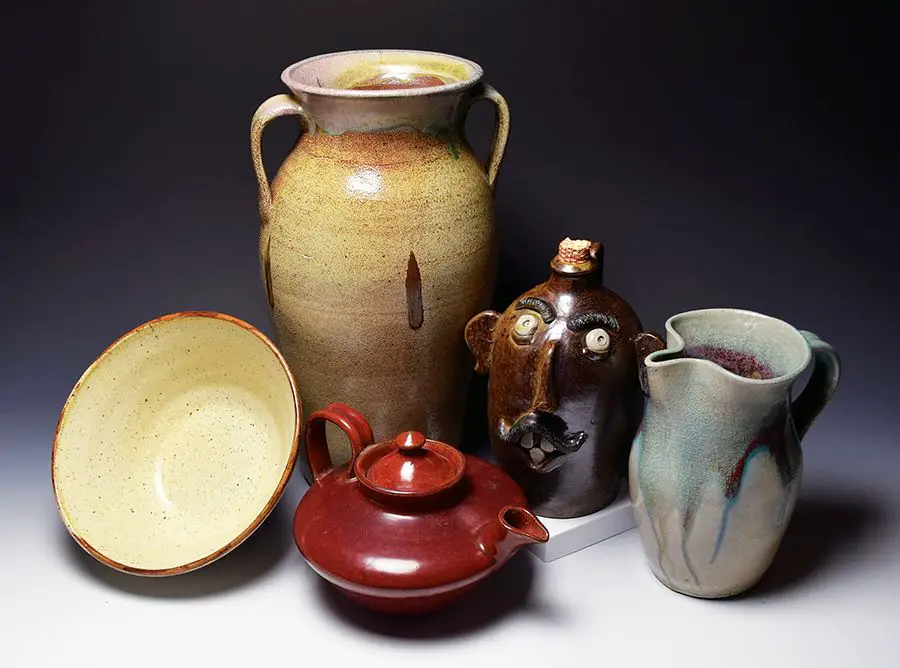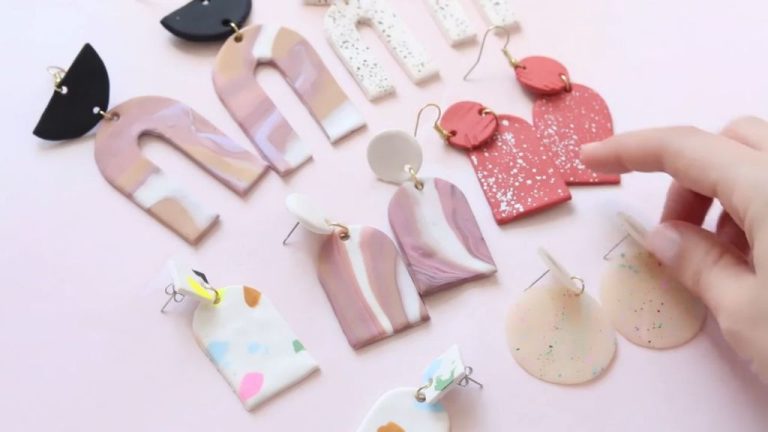Who Are The Famous Potters In Seagrove Nc?
Seagrove, North Carolina is known around the world as the handmade pottery capital of the United States. The area has a long history of pottery making dating back to the 1700s when English and German immigrants settled in the region and discovered the high quality natural clay deposits perfect for pottery (https://discoverseagrove.com/seagrove-history/). These early potters kickstarted the tradition of pottery making in Seagrove that continues today.
Over the last 300 years, Seagrove has become synonymous with exceptional, handmade pottery. Generations of pottery makers have perfected their craft, passing down techniques and recipes for clay, glazes, and firing processes. Seagrove potters are known for creating functional, high quality pottery as well as more sculptural and artistic pieces. Their pottery reflects the rich history and culture of the Seagrove community (https://folkart.org/introduction-seagrove-pottery/).
Today, Seagrove remains a thriving hub for pottery creation and appreciation. It’s home to hundreds of potters creating signature pottery pieces as well as galleries, shops, museums, and events celebrating this craft. Seagrove’s centuries-old pottery tradition continues to shape the community and bring recognition to this small North Carolina town.
Notable Seagrove Pottery Families
Some of the most well-known names in Seagrove pottery belong to a few notable families that have been crafting pottery in the region for generations. These families have helped shape and define the Seagrove pottery tradition.
The Cole family has been involved in Seagrove pottery since the early 1900s, starting with potter Rufus Cole. His sons Charlie and Harvey Cole continued the pottery tradition, and today Charlie’s daughter Kimberley Cole carries on the family legacy as an eighth generation potter (https://discoverseagrove.com/potters-r/).
The Owens family has been potting since the 1850s beginning with Unius Owens. Zachariah Owens learned from his father and opened Turn & Burn Pottery, passing skills onto his sons who opened their own potteries. Today, 7th generation Owens family potters like Beth Owens continue creating handmade pottery (https://folkart.org/introduction-seagrove-pottery/).
Several Teague family members including W.H., J.H., and Daniel established potteries in the early 1900s. Daniel’s wife Agrounda and their sons including Guy Teague carried on the family potting tradition. Today potters like grandson Daniel Johnston Teague continue handcrafting Seagrove wares.
Other notable families known for their pottery skills include Craven, Chriscoe, and McNeill. The pottery of Seagrove reflects generations of family knowledge passed down through the years.
Groundbreaking Techniques
The potters of Seagrove have pioneered many innovative techniques that have influenced pottery across the country. One of their most significant innovations was in glazing. Seagrove potters developed new glaze recipes and application techniques that allowed them to produce vibrant glazes in colors like sky blue, turquoise, teal, emerald green and canary yellow. They also mastered the difficult technique of applying multiple layers of contrasting glazes to create striking visual effects. While alkaline glazes using ash were typical at the time, Seagrove potters created glazes from local materials like granite, gneiss, and feldspar to achieve brilliant colors and crystalline effects in their glazes.
In firing techniques, Seagrove potters were at the forefront of adopting gas and electric kilns in the early 20th century, allowing greater control over temperatures and effects. Wood firing in traditional groundhog kilns imparted unique natural effects to the pottery. Seagrove potters also innovated in firing pots in saggers – lidded ceramic containers that protect pottery during firing. Use of saggers allowed new visual effects in their pottery, like dramatic dark spots and metallic luster.
The potters of Seagrove pioneered many technical innovations that allowed them to produce pottery with distinctive visual styles and effects that came to define Seagrove pottery. Their unique glazes and firing methods spread beyond Seagrove and influenced potters around the country.
Types of Pottery Crafted
Seagrove is known for its distinct pottery styles that utilize different techniques and finishing processes. Some of the most notable types of pottery crafted in Seagrove include:
Salt glaze pottery – This style involves throwing pots and then placing them into a groundhog kiln. Salt is added during the firing process which causes a chemical reaction resulting in a glossy, pebbly texture.[1]
Alkaline glaze pottery – The high alkaline content in the glaze causes crystals to form on the surface during firing, creating a shimmering effect. This style was pioneered by Seagrove potters in the 1920s.[2]
Raku pottery – Made by removing red-hot pots from the kiln and placing them into containers with combustible materials to produce crackled metallic finishes. This ancient Japanese technique was introduced to Seagrove in the 1990s.
Ash glazed pottery – Ash from burning wood is applied to bisque ware which then vitrifies in the kiln, creating a silky, ethereal surface quality.
Seagrove potters have specialized in these techniques for generations, producing signature styles that attract collectors from around the world.
Notable Pottery Schools
Seagrove is home to several leading schools for pottery in the area. Some of the most notable include:
Seagrove Pottery Center
Founded in 1986, the Seagrove Pottery Center is a nonprofit organization dedicated to preserving and promoting pottery traditions in the Seagrove area. They offer classes for all skill levels, from beginner to advanced. Their instructors include renowned Seagrove potters who provide hands-on instruction.
Caldwell Community College and Technical Institute
Their Pottery Technology program teaches students ceramic design, throwing, glazing, sculpting, and more. Graduates earn an Associate of Applied Science degree, leading to careers as professional potters and ceramicists.
Penland School of Crafts
Located near Seagrove in the Blue Ridge Mountains, Penland offers 1-2 week immersive workshops in clay and ceramics taught by skilled instructors. Their courses cover both functional and sculptural techniques.
With a long history of pottery excellence, Seagrove boasts exceptional schools to foster the next generation of talented ceramists and potters in the region.
Annual Seagrove Pottery Events
Seagrove, North Carolina is home to several major annual events that celebrate the town’s renowned pottery heritage and bring together artists and enthusiasts from around the region. Two of the most notable annual events are:

The Seagrove Potters Market – Held each November, this large outdoor market features over 100 potters selling their wares. It draws huge crowds eager to purchase authentic Seagrove pottery direct from the artists themselves. The market spans two days and includes live music and food vendors.
Celebration of Seagrove Potters – Occurring each April, this festival highlights a select group of Seagrove potters displaying and selling their latest creations. The multi-day event includes pottery demonstrations, wood kiln firings, and educational presentations. There are also ample opportunities to meet master potters and learn about their processes.
These major gatherings provide both established and up-and-coming Seagrove potters an opportunity to engage with eager collectors and pottery lovers. They showcase the continued legacy and importance of Seagrove handmade pottery in North Carolina’s artistic heritage.
Seagrove Galleries and Shops
Seagrove is home to numerous galleries and shops that showcase the best of locally produced pottery. Top galleries for viewing and purchasing Seagrove pottery include:
Westmoore Pottery (https://westmoorepottery.com/) – Opened in 1986, Westmoore Pottery features work by over 80 Seagrove area ceramic artists. They carry everything from functional pottery to decorative sculptures.
David Stuempfle Pottery (http://www.davidstuempfpottery.com/) – Specializing in wood-fired stoneware, David Stuempfle’s gallery features his own nature-inspired pottery as well as guest artists.
Bulldog Pottery (https://bulldogpottery.com/) – Established in 2004, this shop represents work by multiple generations of the Cole family, who have been making pottery in Seagrove since the early 1900s.
Seagrove Orchids Ceramic Gallery (https://seagroveorchids.com/) – Featuring over 4,000 sq ft of display space, Seagrove Orchids shows work by 12 Seagrove ceramic artists in a wide variety of styles.
Luck’s Ware (https://luckswaresagrovepottery.com/) – Specializing in traditional alkaline glazed pottery, Luck’s Ware carries historical Seagrove pottery as well as new pieces by local ceramic artists.
Seagrove Pottery Museums
Seagrove is home to several museums dedicated to preserving and showcasing the history of pottery in this small North Carolina town. Some of the notable museums include:
The North Carolina Pottery Center opened in 1998 and features interactive exhibits on the history, culture, and tradition of pottery in the state. It contains a study collection of over 1,400 historical and contemporary works. The museum also hosts special exhibitions, educational programs, and the annual Celebration of Seagrove Potters festival (https://www.ncpotterycenter.org/).
Another key destination is the Seagrove Area Pottery Association, located in an old 1921 schoolhouse. It contains exhibits on notable pottery families and hosts classes, workshops, and an annual film festival (https://discovertroy.com/listing/seagrove-area-pottery-association-sapa/).
The Jugtown Pottery, originally founded in 1921, also operates a museum showcasing its history through exhibits of stoneware, videos, and historic photographs (https://jugtownware.com/pages/jugtown-pottery-museum).
Notable Collections
Some of the best places to see extensive collections of Seagrove pottery include:
The North Carolina Pottery Center at the North Carolina Museum of Art features the largest public display of Seagrove pottery in the world. Their permanent collection includes over 1,800 artifacts representing the Seagrove potteries and potters.
The Seagrove Area Pottery Museum contains artifacts representing the history of pottery making in the Seagrove area dating back to the 18th century. It features changing exhibits highlighting specific potters, techniques, and eras.
Several individual pottery studios like From the Ground Up and Bennett Pottery have small museums on-site showcasing their family’s generations of work.
The private collections of Mint Museum in Charlotte, Greensboro Historical Museum, and CAM Raleigh also hold remarkable representations of Seagrove pottery through the years.
Impact and Legacy
Seagrove pottery has made a significant impact on pottery traditions across the United States. The town is considered a pioneer of alkaline-glazed stoneware, which was later adapted by potters in North Carolina and beyond. Seagrove potters also developed innovative techniques like using glass, wood ash, and sand for glazes and clays – methods that were adopted widely by other potters seeking distinct glaze effects[1].
The Seagrove style of pottery emphasizing earthy, organic shapes and colors using local materials has been influential. Potters around the country aim to emulate the handmade, imperfect look and feel of Seagrove wares. The focus on creating functional, durable everyday pottery for home use made Seagrove pottery highly valued. Their chimney swirl motifs, use of botanical motifs, combinations of matte and glossy glazes all became hallmarks of American folk pottery[2].
Seagrove pottery’s legacy lies in sustaining centuries-old potting traditions while inspiring contemporary interpretations. Seagrove potters continue to pass on skills through families and mentoring programs, while launching new designs using the unique clays of North Carolina. Their enduring contributions enrich America’s craft heritage.
[1] https://www.ourstate.com/our-state-knows-best-seagrove-pottery/
[2] https://www.artsy.net/article/artsy-editorial-north-carolina-town-mecca-ceramics-artists



